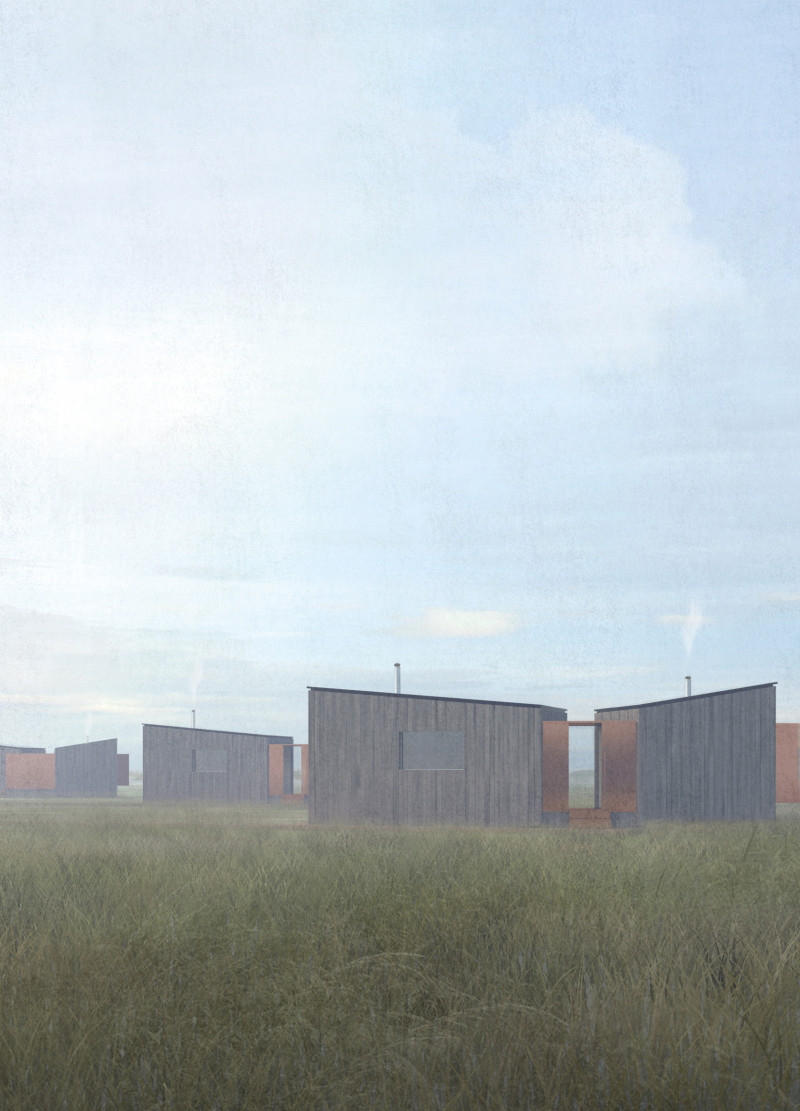5 key facts about this project
This architectural design project, titled "Into an Architectural Poem," is located in Latvia and serves as a multifaceted communal space that emphasizes the relationship between architecture and nature. The project integrates living accommodations, communal dining, and performance spaces into a cohesive structure that respects its natural surroundings while fostering community interaction and engagement. The design ethos is rooted in Latvian cultural narratives, reflecting a deep appreciation for local traditions and the landscape's inherent qualities.
The project comprises several essential components, including a Host Accommodation, Individual Huts, a Multifunctional Space, and an Open Meditation Area. The Host Accommodation acts as the primary gathering point, offering communal amenities while providing private accommodations that facilitate a connection to the outdoors through strategically placed windows and doors. Individual Huts are designed for privacy and comfort, maintaining access to scenic views and featuring wooden construction that complements the natural environment. The Multifunctional Space serves as a dining and performance venue, designed to encourage social gathering and cultural expression.
### Architectural Integration with Nature
What sets "Into an Architectural Poem" apart from other projects is its commitment to harmonizing architecture with its environment. The use of local materials, including dark stained timber and copper elements, not only ensures visual coherence with the landscape but also addresses environmental sustainability. The design incorporates pitched roofs that efficiently manage snow load, a characteristic of traditional Latvian architecture, which also aids in water runoff and overall functionality.
Each building's orientation has been meticulously planned to maximize natural light and views, enhancing the occupants' experience. The project defines outdoor spaces through decking and landscaping that seamlessly transition from the indoor environments, fostering an inclusive atmosphere where nature becomes an extension of the architecture.
### Community-Centric Design
The project emphasizes community interaction through its spatial arrangement. The adjacency of the Host Accommodation and Multifunctional Space encourages social engagement while maintaining personal retreats within the individual huts. This configuration allows for various activities, including dining, meditation, and cultural performances, thereby serving multiple functions that can adapt to user needs.
The thoughtful integration of communal and private spaces creates an environment conducive to collaboration and connection. Moreover, the Open Meditation Space is strategically situated to offer tranquility away from the hustle of communal areas, illustrating a sensitive understanding of user experience and well-being in architectural design.
For those interested in a detailed exploration of "Into an Architectural Poem," reviewing the architectural plans, sections, designs, and ideas will provide a nuanced understanding of how this project brings together the principles of architecture, culture, and nature. Consider examining these elements further to gain insight into the thought processes and methodologies that informed this design.



























